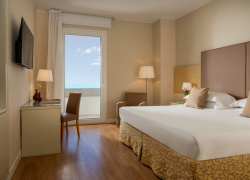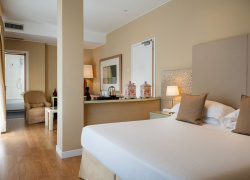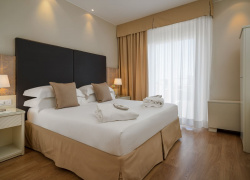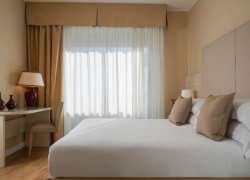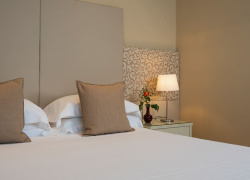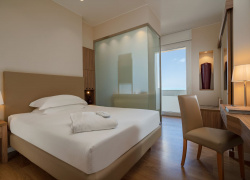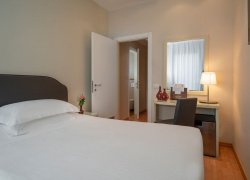Rimini is one of the best known resorts on the Riviera Romagnola for its welcome, hospitality, entertainment, good food, historical and cultural heritage, and for those who want to spend a peaceful beach vacation.
It is reductive to think of Rimini as just beaches and fun: its neighborhoods and squares, noisy and beautiful, are in fact a continuous discovery, with enchanting glimpses and archaeological treasures.
Our staff recommends some places of interest in Rimini that you should not miss:
-
THE ARCH OF AUGUSTUS is the symbol of the city. Built in 27 B.C. in honor of Caesar Augustus, it is the oldest surviving Roman arch and stands at the meeting point of the Via Flaminia (which connected Rimini to Rome) and the Via Emilia.
-
THE MALATESTA TEMPLE is linked to the name of Leon Battista Alberti, who designed the structure and exterior, as well as to famous artists such as Pietro della Francesca, Giotto, Giorgio Vasari, and Agostino di Duccio for the frescoes, paintings, and sculptures inside. It was commissioned by Sigismondo Pandolfo Malatesta to celebrate his lineage.
-
THE DOMUS OF THE SURGEON, open to the public since 2007, is a small Pompeii rediscovered in the heart of Rimini's historical center. In the late 1980s, during urban redevelopment work in Piazza Ferrari.
-
THE CITY MUSEUM is part of the civic museum network along with the Domus of the Surgeon and the Ethnographic Museum of the Gaze, which is perhaps the most original of the three and opens the mind to new perspectives.
-
THE TIBERIAN BRIDGE was built over the Marecchia River on the initiative of Augustus and completed by Tiberius (14-21 A.D.). It is an impressive example of Roman grandeur and their remarkable technical skills.
-
CASTEL SISMONDO is the majestic fortress of Rimini, located in Piazza Malatesta, with its large square towers and stepped walls. The castle was built in the 15th century by Sigismondo Pandolfo Malatesta.
-
THE PALAZZO DELL'ARENGO, the former Palatium communis, symbolized the freedom and established authority of the city government. It was where the Council of the People of Rimini met in the late Middle Ages. It is a majestic building in Romanesque-Gothic style with crenellated towers.
-
BORGO SAN GIULIANO is another gem of the city, this ancient working-class neighborhood will steal your heart.
-
THE CHURCH OF SAN GIULIANO, originally a Benedictine church in the 9th century, was rebuilt in the 16th century. It houses an altarpiece by Paolo Veronese (1588) and, on the third altar on the left, a polyptych by Bittino Da Faenza (1409).






